- Choosing the Right Bulb Flowers
- 1. Climate and Hardiness
- 2. Bloom Time
- 3. Sunlight Requirements
- 4. Size and Growth Habit
- 5. Color and Appearance
- 6. Maintenance Requirements
- Preparing the Baskets and Soil
- Choose the Right Baskets
- Select the Appropriate Soil
- Prepare the Baskets and Soil
- Selecting the Ideal Location
- 1. Sunlight
- 2. Protection from the Elements
- 3. Soil Quality
- 4. Accessibility
- 5. Aesthetics
- Arranging the Bulbs in the Baskets
- Proper Watering and Fertilization
- 1. Watering
- 2. Fertilization
- Protecting the Bulb Flowers from Pests
- 1. Choose pest-resistant varieties
- 2. Monitor for signs of pests
- 3. Remove pests manually
- 4. Use insecticidal soap
- 5. Apply organic pest control methods
- 6. Provide proper care and maintenance
- 7. Encourage beneficial insects
- 8. Create physical barriers
- Maintaining and Pruning the Plants
- 1. Regular watering
- 2. Fertilization
- 3. Deadheading
- 4. Pruning
- 5. Controlling pests and diseases
- Enjoying the Beautiful Blooms
- 1. Find the Perfect Spot
- 2. Create a Cozy Atmosphere
- 3. Observe the Growth Process
- 4. Appreciate the Scent
- 5. Capture the Beauty
- Questions and Answers:
- Can I plant bulb flowers in baskets?
- What types of bulb flowers can be planted in baskets?
- Are bulb flowers easy to grow in baskets?
- Do bulb flowers in baskets require a lot of sunlight?
- How often should I water bulb flowers in baskets?
- Can I use any type of basket for planting bulb flowers?
- How long do bulb flowers in baskets bloom?
- Videos: Plant Flower Bulbs *FAST* with a BULB DRILL!
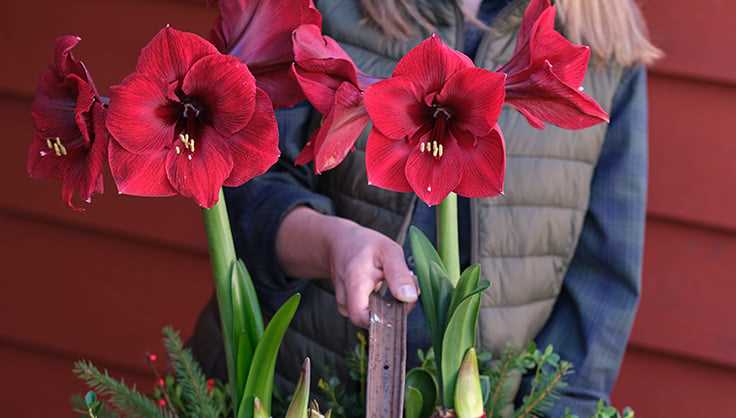
Planting bulb flowers in baskets is a convenient and practical option for gardeners looking to add a burst of color to their outdoor spaces. Baskets offer a versatile way to display flowers, allowing them to be easily moved and rearranged as needed. Whether you have a small balcony or a large garden, planting bulbs in baskets is a fast and efficient way to create a stunning floral display.
One of the benefits of planting bulb flowers in baskets is the convenience it offers. Baskets can be placed anywhere in the garden, allowing you to create focal points and add color to areas that may be difficult to plant in. They can be hung from hooks, placed on shelves or tables, or even attached to walls. This flexibility enables you to make the most of your outdoor space and experiment with different arrangements.
In addition to their convenience, planting bulb flowers in baskets is also a practical choice. Baskets provide good drainage, ensuring that excess water is easily drained away. This helps prevent overwatering and root rot, which can be common problems when planting in traditional pots or beds. Furthermore, baskets can be lined with a protective layer, such as burlap or plastic, to further improve drainage and prevent soil erosion.
Lastly, planting bulb flowers in baskets is a fast way to create a beautiful floral display. Bulbs are easy to plant and require minimal maintenance. Simply place the bulbs in the basket, cover with soil, and water regularly. In a matter of weeks, you’ll be rewarded with a gorgeous display of colorful blooms. This makes bulb flowers in baskets a great option for those who are new to gardening or have limited time to dedicate to their outdoor spaces.
In conclusion, planting bulb flowers in baskets offers convenience, practicality, and speed. Whether you’re looking to add a splash of color to a small balcony or create a stunning floral display in a larger garden, baskets provide a versatile solution. Their ability to be easily moved and rearranged, along with their good drainage and minimal maintenance requirements, make bulb flowers in baskets a popular choice among gardeners. So why not give them a try and create your own beautiful display?
Choosing the Right Bulb Flowers
When it comes to choosing bulb flowers for your baskets, there are several factors to consider to ensure their success. Here are some important factors to keep in mind:
1. Climate and Hardiness
One of the most important factors to consider when choosing bulb flowers is your climate and hardiness zone. Different bulb flowers have different temperature tolerance levels, so make sure to select ones that are suitable for your region.
2. Bloom Time
Another important factor to consider is the bloom time of the bulb flowers. Some bulbs bloom in spring, while others bloom in summer or fall. Consider the desired timing of the blooms and choose bulbs accordingly.
3. Sunlight Requirements
Take note of the sunlight requirements of the bulb flowers you are considering. Some bulbs prefer full sun, while others prefer partial shade. Choose bulbs that will thrive in the amount of sunlight your baskets receive.
4. Size and Growth Habit
Consider the size and growth habit of the bulb flowers. Some bulbs produce large, showy flowers, while others produce smaller, delicate blooms. Consider the height and spread of the bulbs to ensure they will fit well in your baskets.
5. Color and Appearance
Choose bulb flowers with colors and appearances that you find appealing and complementary to your basket design. Consider the overall color scheme and style you want to achieve with your bulb flowers.
6. Maintenance Requirements
Lastly, consider the maintenance requirements of the bulb flowers. Some bulbs require more care and attention, while others are low-maintenance. Choose bulbs that align with the level of care and attention you are willing to provide.
By considering these factors and doing some research, you can choose the right bulb flowers for your baskets, ensuring beautiful and thriving displays.
Preparing the Baskets and Soil
Before planting bulb flowers in baskets, it is important to prepare the baskets and soil properly. This will help ensure the success of your flower bulbs and create a healthy growing environment for them.
Choose the Right Baskets
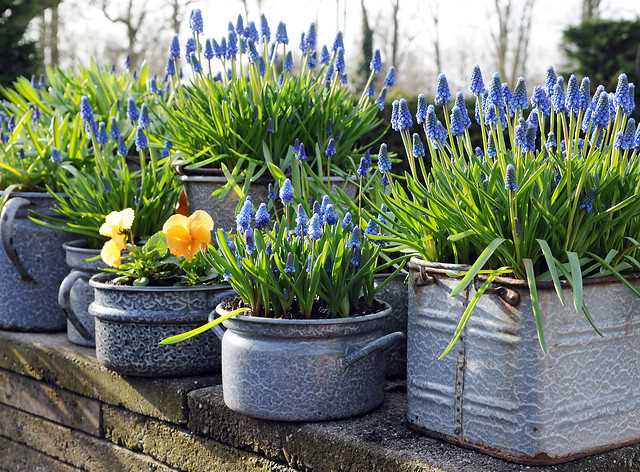

- Choose baskets that are sturdy and have good drainage holes to prevent waterlogging.
- The size of the basket should be suitable for the type of bulb flowers you plan to plant.
- Consider using hanging baskets or baskets with handles for easy transportation and maintenance.
Select the Appropriate Soil
Choosing the right soil is crucial for the growth and development of bulb flowers. Here are some tips:
- Use well-draining soil that is specifically formulated for container gardening.
- Make sure the soil is loose and friable to allow for proper root development.
- Avoid using dense or heavy soils, as they can lead to poor drainage and root rot.
- Consider mixing in organic matter, such as compost or peat moss, to improve soil fertility and moisture retention.
Prepare the Baskets and Soil
Follow these steps to prepare the baskets and soil:
- Clean the baskets thoroughly with water and a mild detergent to remove any dirt or debris.
- Fill the baskets with a layer of gravel or broken pottery pieces at the bottom. This will help improve drainage and prevent waterlogging.
- Add a layer of soil on top of the gravel layer, filling the basket until it is about half full.
- Arrange the bulb flowers in the basket, making sure to space them properly to allow for growth.
- Add more soil around the bulbs, gently firming it down with your hands or a small trowel.
- Leave a small gap between the soil surface and the top of the basket to allow for watering.
- Water the basket thoroughly until the excess water drains out of the bottom.
By properly preparing the baskets and soil, you can provide a suitable environment for your bulb flowers to thrive and bloom beautifully.
Selecting the Ideal Location
When it comes to planting bulb flowers in baskets, selecting the ideal location is crucial for their growth and overall success. Here are some factors to consider when choosing a location for your bulb flower baskets:
1. Sunlight
Bulb flowers thrive in areas with ample sunlight. Choose a location that receives at least 6-8 hours of direct sunlight per day. This will ensure that your flowers receive the necessary amount of light to develop and bloom beautifully.
2. Protection from the Elements
While bulb flowers require sunlight, they also need protection from extreme weather conditions. Select a location that provides some shelter from strong winds, heavy rain, or intense heat. This could be near a wall or under a tree canopy.
3. Soil Quality
Bulb flowers prefer well-draining soil that is rich in organic matter. Before selecting a location, assess the soil quality in your garden. Ensure that it is loose, fertile, and drains well. If the soil is heavy or clay-like, consider adding organic matter such as compost or peat moss to improve its texture and drainage.
4. Accessibility
Choose a location that is easily accessible for planting, watering, and maintaining your bulb flower baskets. Avoid areas that are difficult to reach or require excessive bending or stretching. Accessibility is key to ensure proper care for your plants throughout their growth.
5. Aesthetics
Consider the overall aesthetics of your garden when choosing a location for your bulb flower baskets. Select a spot that complements the existing landscape and enhances the visual appeal of your outdoor space. Whether it’s a focal point near a patio or along a walkway, the right location can add charm and beauty to your garden.
By carefully selecting the ideal location for your bulb flower baskets, you can provide the optimal conditions for their growth and blooming. With the right amount of sunlight, protection, and soil quality, your bulb flowers will thrive and create a vibrant display in your garden.
Arranging the Bulbs in the Baskets
Arranging the bulbs in the baskets is a simple and straightforward process that can be done in just a few steps. Follow these guidelines to ensure optimal results:
- Choose the right bulbs: Select bulbs that are suitable for growing in containers. Look for varieties that are known to thrive in baskets and have compact growth habits.
- Prepare the baskets: Line the baskets with a layer of potting mix or a biodegradable liner to prevent soil from escaping through the drainage holes.
- Add soil: Fill the baskets with a well-draining and nutrient-rich potting mix. Leave enough space at the top for the bulbs to be placed.
- Plan the arrangement: Consider the colors and heights of the bulbs when planning their placement in the baskets. Create a visually appealing arrangement by alternating different varieties.
- Position the bulbs: Gently press the bulbs into the soil, ensuring they are firmly anchored but not completely buried. Maintain some spacing between the bulbs to allow for proper growth and development.
- Water and care: After arranging the bulbs, water the baskets thoroughly but avoid overwatering. Place the baskets in a location that receives the appropriate amount of sunlight for the specific bulb varieties chosen.
- Maintenance: Monitor the baskets regularly for moisture levels and signs of growth. Provide additional water as needed and fertilize according to the specific requirements of the bulb varieties.
By following these steps, you can easily arrange the bulbs in baskets, creating a beautiful and convenient way to enjoy blooming flowers in any space.
Proper Watering and Fertilization
Proper watering and fertilization are essential for the healthy growth and blooming of bulb flowers in baskets. Here are some tips to ensure your flowers thrive:
1. Watering
Watering bulb flowers correctly is crucial to maintain their health and prevent issues such as overwatering or underwatering. Follow these guidelines:
- Water the plants when the top inch of soil feels dry to the touch.
- Avoid overwatering, as it can lead to root rot and other diseases. Ensure the soil is well-drained, and excess water can freely escape.
- Water the soil directly at the base of the plant, avoiding the foliage, to prevent fungal diseases.
- Use room temperature water to avoid shocking the roots.
- Consider using a drip irrigation system or self-watering baskets to provide a consistent water supply.
2. Fertilization
Bulb flowers require proper fertilization to supply the necessary nutrients for their growth and flowering. Consider the following tips:
- Use a slow-release fertilizer specifically formulated for bulb plants.
- Apply fertilizer according to the manufacturer’s instructions, usually once every few months during the growing season.
- Avoid over-fertilization, which can result in excessive foliage growth and fewer flowers.
- If desired, you can supplement with a liquid fertilizer during the flowering period to promote more abundant blooms.
Remember to always read and follow the instructions provided with your specific plant and fertilizer, as different plants may have different requirements.
Protecting the Bulb Flowers from Pests
When planting bulb flowers in baskets, it is important to take steps to protect them from pests. These pests can damage the flowers or even kill them, so it is crucial to be proactive in keeping them away. Here are some tips for protecting your bulb flowers from pests:
1. Choose pest-resistant varieties
Before planting your bulb flowers, research and choose varieties that are known to be resistant to pests. These varieties are more likely to withstand pest attacks and require less pesticide use.
2. Monitor for signs of pests
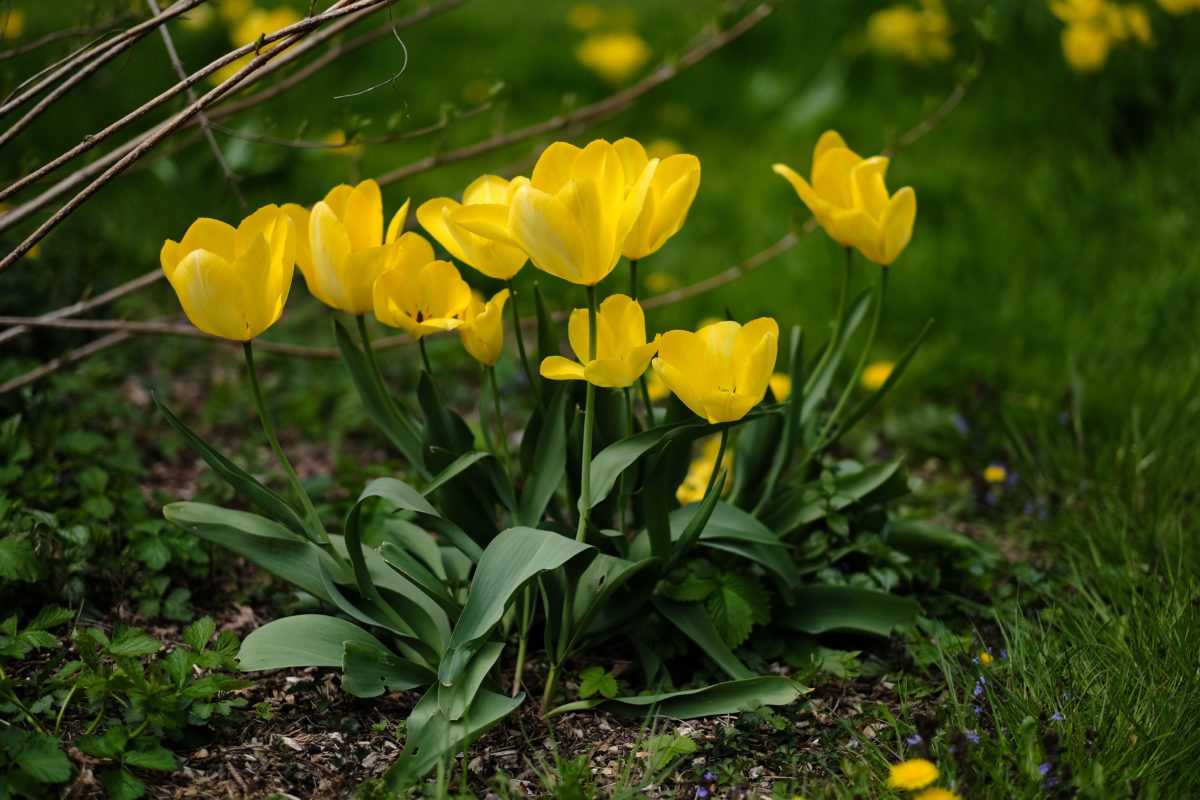

Regularly inspect your bulb flowers for signs of pests, such as chewed leaves, holes in the flowers, or discoloration. Early detection can help prevent widespread infestations.
3. Remove pests manually
If you spot any pests on your bulb flowers, remove them manually. You can use gloves or tweezers to pick off larger pests, or gently shake the flowers to dislodge smaller pests.
4. Use insecticidal soap
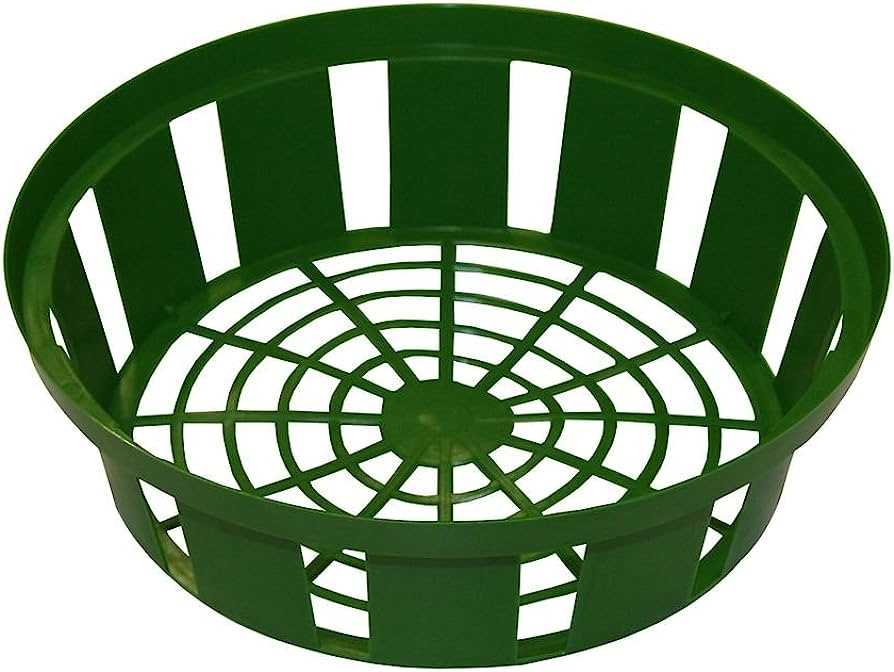

Insecticidal soap is a mild, non-toxic pesticide that can be used to control pests on bulb flowers. Follow the instructions on the label and apply the soap solution to the affected plants.
5. Apply organic pest control methods
Consider using organic pest control methods, such as neem oil or diatomaceous earth. These natural substances can deter and kill pests without harming the bulb flowers or the environment.
6. Provide proper care and maintenance
Ensuring that your bulb flowers receive proper care and maintenance can help them withstand pest attacks. Proper watering, fertilizing, and pruning can keep the plants healthy and less vulnerable to pests.
7. Encourage beneficial insects
Some insects are natural predators of pests and can help keep their populations in check. Planting flowers that attract beneficial insects, such as ladybugs or lacewings, can help protect your bulb flowers.
8. Create physical barriers
To keep pests away from your bulb flowers, you can create physical barriers. Use netting or floating row covers to prevent pests from accessing the flowers.
By following these tips, you can protect your bulb flowers from pests and ensure they thrive in your baskets for a beautiful display.
Maintaining and Pruning the Plants
Proper maintenance and pruning are essential for healthy growth and abundant flowering of bulb plants in baskets. Here are some tips to help you maintain and prune your plants:
1. Regular watering
Water the plants regularly to keep the soil moist, but not excessively wet. Bulb plants in baskets have a limited root space, so you need to ensure they receive enough water to survive. However, overwatering can lead to root rot and other diseases. Monitor the moisture level of the soil and adjust your watering schedule accordingly.
2. Fertilization
Provide your plants with the necessary nutrients by fertilizing them regularly. Choose a balanced, slow-release fertilizer specifically formulated for bulb plants. Follow the instructions on the fertilizer packaging to determine the proper dosage and frequency of application. Fertilization will promote healthy growth and vibrant flowers.
3. Deadheading
Remove faded or wilted flowers by deadheading them regularly. This will encourage the plant to produce more blooms and prevent the formation of seeds, which can redirect the plant’s energy from flower production. Deadheading also keeps the plant looking neat and tidy.
4. Pruning
Prune the plants to maintain their shape and size, and to remove any dead or damaged foliage. Use clean and sharp pruning shears to make clean cuts and prevent the transfer of diseases. Cut back any overgrown branches or stems to ensure proper air circulation and prevent overcrowding.
5. Controlling pests and diseases
Monitor your plants regularly for signs of pests or diseases. Common pests that can affect bulb plants include aphids, mealybugs, and spider mites. Treat any infestations promptly using organic or chemical insecticides, following the instructions on the product label. Also, remove any infected leaves or flowers to prevent the spread of diseases.
By following these maintenance and pruning practices, you can ensure that your bulb plants in baskets remain healthy, attractive, and productive. Remember to observe the specific care requirements of each plant species to optimize their growth and flowering.
Enjoying the Beautiful Blooms
Planting bulb flowers in baskets not only provides a convenient and practical way to add color to your garden or patio, but it also allows you to enjoy the beautiful blooms up close. Here are a few tips on how to fully appreciate the stunning flowers:
1. Find the Perfect Spot
Place your bulb flower basket in an area where you can easily see and admire the blooms. Whether it’s on your porch, balcony, or in your backyard, choose a location that you frequently visit and where you can sit back and relax.
2. Create a Cozy Atmosphere
Add some comfortable seating and decorative elements around your bulb flower basket to create a cozy atmosphere. This will encourage you to spend more time in the area, allowing you to fully immerse yourself in the beauty of the flowers.
3. Observe the Growth Process
Take some time each day to observe the growth of your bulb flowers. Notice how the buds gradually open up into beautiful blossoms and how the colors become more vibrant over time. It’s a fascinating process that can bring joy and excitement to your daily routine.
4. Appreciate the Scent
Bulb flowers often have a delightful fragrance that adds another layer of enjoyment to their beauty. Take a moment to breathe in the scent and let it relax and refresh your senses. You can even invite your friends or family to join you in this sensory experience.
5. Capture the Beauty
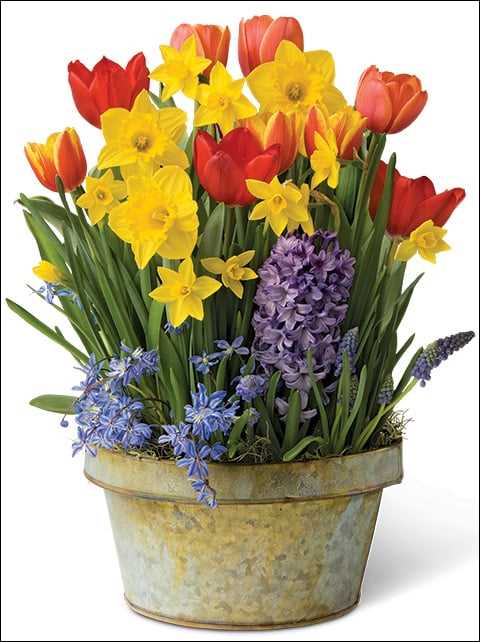

Don’t forget to capture the beauty of your bulb flower basket by taking photos or creating artwork. Whether it’s a close-up shot of a single bloom or a panoramic view of the entire basket, these images will serve as a lasting reminder of the stunning display you’ve created.
By following these tips, you can fully embrace and enjoy the beautiful blooms of your bulb flower basket. So sit back, relax, and let the vibrant colors and sweet scents brighten up your day.
Questions and Answers:
Can I plant bulb flowers in baskets?
Yes, you can plant bulb flowers in baskets. It’s a convenient and practical way to enjoy colorful flowers.
What types of bulb flowers can be planted in baskets?
You can plant a wide variety of bulb flowers in baskets, including tulips, daffodils, hyacinths, and crocuses.
Are bulb flowers easy to grow in baskets?
Yes, bulb flowers are relatively easy to grow in baskets. They require minimal care and can be a great option for beginners.
Do bulb flowers in baskets require a lot of sunlight?
Most bulb flowers in baskets prefer full sunlight, so it’s important to choose a sunny location for your baskets.
How often should I water bulb flowers in baskets?
Bulb flowers in baskets should be watered regularly, keeping the soil moist but not soggy. It’s important to monitor the moisture level and adjust watering accordingly.
Can I use any type of basket for planting bulb flowers?
It’s best to use baskets specifically designed for gardening, as they have proper drainage and support for the plants. However, you can also repurpose other types of baskets as long as you make sure they have adequate drainage holes.
How long do bulb flowers in baskets bloom?
The blooming period of bulb flowers in baskets varies depending on the specific type of flower. However, most bulb flowers have a blooming period of a few weeks to a few months.







